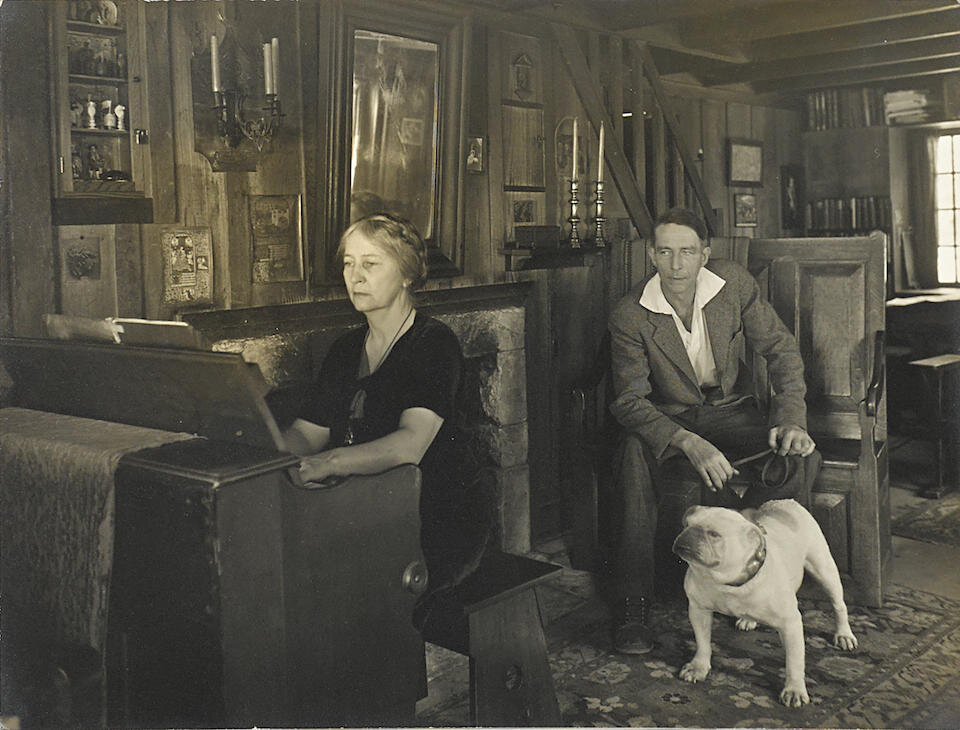…and whoever speaks across the gap of thousand years will understand that he has to speak of permanent things, and rather clearly too, or who would hear him? Robinson Jeffers
What needs most simply to be stressed is that—for all his lyric flights, narrative probings, historical pronouncements, and excoriations of human solipsism in all its individual and collective forms—Jeffers believed poetry should bring us to reality rather than transform or replace it. Poetry’s task, he said is to engage “permanent things” and reveal the permanence beyond the poem.*
Monterey journalist and Big Sur native Rosalind Sharpe Wall published her memoir of the the settlers, ranchers, homesteaders and artists she knew growing up in Big Sur. She describes the arrival of Robinson Jeffers to the area and the initial impressions that lead to the themes and somber tones of his poetry.
George Sterling’s enthusiastic, lyrically descriptive letters to Jeffers, describing the Sur and its isolated inhabitants, struck a chord and after the Jeffers lost their first child, Maeve, they moved to Carmel where he and Una walked down to Ocean Avenue on December 20, 1914, and took the horse drawn mail stage that left before dawn and arrived at Pfeiffer’s Resort in the Big Sur by dark.*
Edward Weston photograph of Jeffers and his twin sons Donnan and Garth.
I asked Jeffers what his first impression of the Coast was on that wintery day. “The Coast seemed solitary; there was a light rain. I would not have written the same kind of thing if it had been a different kind of landscape. My first impression of the Coast: it was winter time, darker and more sinister. I was shocked later when I saw Big Sur in the summer and the hills golden. Perhaps I shouldn’t have said sinister; rather hostile to its inhabitants.”*
Corbett Grimes was the mail stage driver, as fate would have it, and he was a garrulous young man recently arrived from Liverpool who was later to become known as the Coast’s best storyteller. He had come to visit his uncle, Ed Grimes, who had married Ellen Post, at his ranch on the high trail below BigSur, and he was all agog with the wonders of the place which exceeded anything he had ever heard in England of the wonders of the Wild West. On their way down the Coast, Grimes regaled his fascinated passenger with dramatic tales, pointing out every landmark where an accident, murder, suicide, or lynching had occurred.
Naturally he gave Jeffers the impression that the Coast was all violence, all somberness and brooding.*
*The Selected Poetry of Robinson Jeffers, Edited by Tim Hunt, Stanford University Press 2001
**A Wild Coast and Lonely, Big Sur Pioneers, Rosalind Sharpe Wall
Una and Robinson Jeffers and his English bulldog Haig at Tor House
James Karman, Jeffers biographer sums up his art and legacy:
…no one else devoted himself or herself to bringing an entire landscape to life in verse; and no one else was so persuasive in doing so that he or she can be credited with helping to inspire the modern environmental movement. With a combination of scientific acumen and aboringal love for the Monterey—Carmel—Big Sur coast of California, Jeffers uncovered the terroir, the spirit and inner life of the region—as revealed in its topography, its flora, fauna, and people.
Robinson Jeffers, Poet and Prophet


